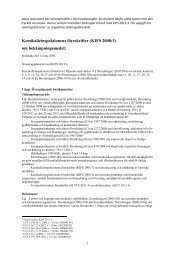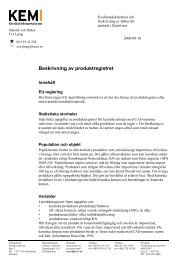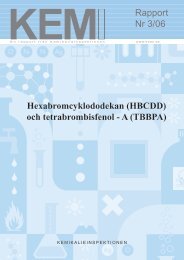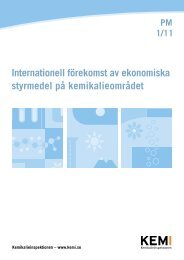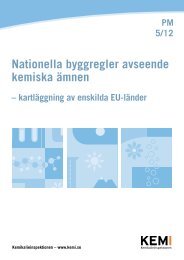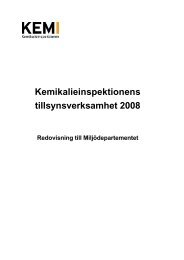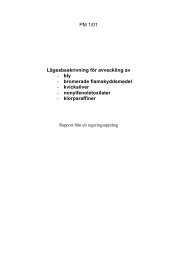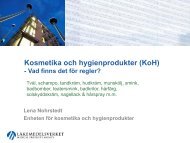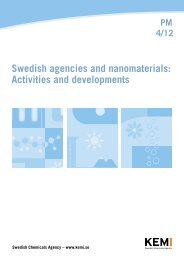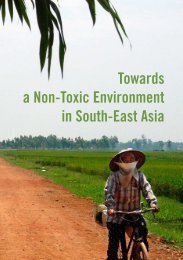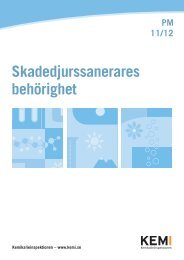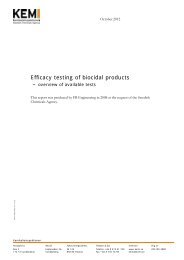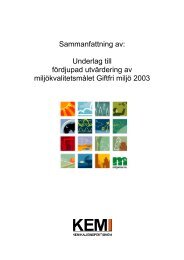Labelling of Plant Protection Products
Labelling of Plant Protection Products
Labelling of Plant Protection Products
You also want an ePaper? Increase the reach of your titles
YUMPU automatically turns print PDFs into web optimized ePapers that Google loves.
How is the environment affected<br />
Several <strong>of</strong> the substances used in plant protection products are hazardous<br />
to the environment. This means that they may be difficult to break down<br />
(persistent), accumulate in living organisms or be directly toxic, for<br />
example to aquatic organisms. Persistent substances accumulate in the soil<br />
over several years and in the longer term may have an impact on water<br />
quality. <strong>Plant</strong> protection products may enter watercourses or the groundwater<br />
as a result <strong>of</strong> wind drift, evaporation, surface run<strong>of</strong>f or leaching in<br />
the soil. Residues <strong>of</strong> chemical substances are regularly encountered in<br />
surface water and groundwater. The aim is to reduce unnecessary dispersal<br />
to the environment so that residue levels in surface water and groundwater<br />
are as low as possible.<br />
EU rules to reduce risks<br />
The eu works jointly to improve the rules relating to plant protection<br />
products. An important aim is to reduce the quantity <strong>of</strong> hazardous<br />
chemical substances.<br />
Recent developments<br />
• A new plant protection products regulation has been adopted in the eu<br />
which means, among other things, that hazardous substances have to<br />
be replaced by less hazardous ones.<br />
• The eu’s review programme for plant protection products has meant<br />
that substances <strong>of</strong> very high concern may no longer be used.<br />
• A new directive for sustainable use <strong>of</strong> pesticides 3 has been adopted in<br />
the eu.<br />
• A new regulation on the classification, labelling and packaging <strong>of</strong><br />
substances and mixtures 4 has come into force.<br />
What can companies do<br />
Companies manufacturing or selling plant protection products are<br />
responsible, under current rules, for labelling them correctly. The rules on<br />
labelling are wide-ranging, including special requirements regarding how<br />
the information that reaches the user is to be formulated. The particulars<br />
shown on the label and in the associated directions for use must provide<br />
information on what risks use <strong>of</strong> the product poses and how to protect<br />
oneself against unnecessary or harmful exposure. By designing labels and<br />
directions for use in a clear and easy-to-read way, manufacturers and sellers<br />
<strong>of</strong> plant protection products can assist farmers and other users in reducing<br />
the risks in handling.<br />
3. Directive <strong>of</strong> the European Parliament and <strong>of</strong> the Council 2009/128/ec establishing a framework<br />
for Community action to achieve the sustainable use <strong>of</strong> pesticides.<br />
4. Regulation (ec) No 1272/2008 on classification, labelling and packaging <strong>of</strong> substances and mixtures.<br />
7



